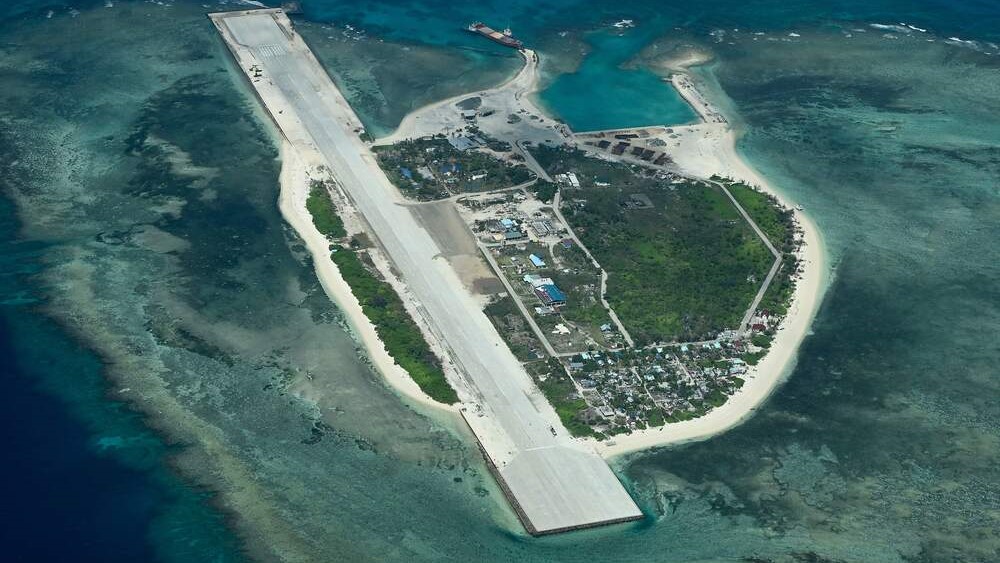top of page
China and the South China Sea

BACKGROUND AND BUILD-UP
Emerging as a furnace of geopolitical tensions, the South China Sea boasts a complicated network of territorial conflicts and military posturing that can throw off the fragile equilibrium of power in the Asia-Pacific area.
China's aggressive claims of sovereignty over large parts of the South China Sea, a strategically important waterway with great economic value, are at the core of these growing tensions. Beijing's territorial claims in the South China Sea conflict are spread along with those of many Southeast Asian countries including Taiwan, Vietnam, and the Philippines.
These conflicts have driven a vicious cycle of militarization whereby each side strengthens its military capacity and functions provocatively to support its particular claims. Recent years have witnessed a sharp turn in the dispute between China and the Philippines. Beijing has embraced a two-pronged strategy combining diplomatic gestures with forceful displays.
On one side, China has presented the possibility of diplomatic interaction, debatably facilitated by the Association of Southeast Asian Nations (ASEAN), to promote regional cooperation and stability through shared exploration and resource management. This hopeful view sees China's regional dominance reinforced by a mutually advantageous arrangement between China and the Philippines, therefore reducing the possibility for direct conflict.
On the other hand, China's actions create a more alarming image. The frequency and intensity of maritime incidents in the South China Sea increase the likelihood of igniting a more general inadvertent crisis. Declaring "indisputable sovereignty" over the disputed islands and refuting any territorial conflicts with the Philippines, China's Foreign Ministry has made audacious statements.
Such language, together with China's increasing military presence in the area, might cause more escalation, testing the boundaries of U.S. security assurances and China's will to support its threats. In response, the Philippines has worked to strengthen its defenses, depending on military backing from friends like the United States and India.
India, eager to offset China's increasing sway in the area, has given the Philippines military hardware including missiles and patrol aircraft, strengthening its defense against possible Chinese attack. The conflicts over South China Sea get still another degree of intricacy from the Taiwan Strait.
Strategically important as a waterway, the Taiwan Strait is especially important for China's larger maritime policy and shapes its activities in the South China Sea. With the contemporary focus on area denial and anti-access techniques including naval blockades, tensions in the Taiwan Strait have historically spurred China's military modernization efforts and doctrinal modifications.
Recent events like the collision close to Kinmen and American naval operations across the strait highlight its dedication to Taiwan's security, aggravating the instability in the area. China's mounting pressure on the Philippines in the South China Sea could be a deliberate action meant to minimize U.S. obligations to the Taiwan Strait.
China might be trying to stretch U.S. resources and attention by raising tensions in the South China Sea, therefore undermining its will to support Taiwan should a war break out. Taiwan, too, has aimed to increase its military might in response to China's aggressiveness. Another claimant in the South China Sea, Vietnam, has also come under Beijing's crossfire.
Tensions between China and Vietnam have been raised once more with her declaration of new baseline points defining her claimed jurisdiction in the northern portion of the Gulf of Tonkin. Though the rhetoric used to support these assertions is not fresh, it reminds us of China's relentless will to establish its authority in the area.
Maintaining stability and sustaining the values of freedom of navigation and peaceful dispute resolution benefits the United States, a significant worldwide power and strategic ally to many Asian-Pacific countries, directly. With many important bases and stations like the Kadena Air Base in Okinawa, Japan, the Andersen Air Force Base in Guam, and the Seventh Fleet headquartered in Yokosuka, Japan, the United States keeps a sizable military presence in the area.
Providing a strategic counterpoint to China's mounting military capability, these facilities act as centers of U.S. air operations, force projection, and maritime security in the Western Pacific. Declaring its right to sail and fly across what it regards as international waters and airspace, the United States has also carried many freedom of navigation operations (FONOPs) in the South China Sea.
From the American point of view, the South China Sea conflict should be considered as a chance to balance its rivalry with China and support diplomatic projects to control these conflicts. The U.S. strategy has drawn criticism, the meantime, for being hampered by its inconsistencies.
Although the U.S. itself is not a party to the United Nations Convention on the Law of the Sea (UNCLOS), which offers a legal framework for settling maritime conflicts, it supports freedom of navigation and respect for international norms. Washington has a chance to underline peaceful conflict resolution and deepen its ties with Southeast Asian countries by stressing the region's sensitivity to the expenses connected with strategic competitiveness between the U.S. and China.
The U.S. can significantly help to preserve a fragile balance of power in the area by strengthening its pledges to friends like the Philippines and Taiwan and by diplomatic initiatives to reduce tensions. The security dynamics of the South China Sea are undergoing a radical change as China's military might and infrastructural development on disputed areas increase.
China has substantially committed to modernizing its navy and air forces, building powerful anti-ship and anti-air missile systems, and building military bases on man-made islands in the disputed areas. These acts have startled regional powers and spurred a matching increase in military might among her neighbours.
China's rising defence spending emphasizes its desire, considerably more loudly than its remarks of a conciliatory nature regarding "win-win" solutions. The possibility of attracting non-claimant nations such as Australia, India, and others complicates the maritime conflicts even more and emphasizes the need for fresh regional initiatives to find a complete settlement. Particularly India has been a major actor in the area trying to balance China's dominance with the protection of its strategic interests.
Maintaining regional peace and stopping the escalation of war depend on untangling the entwined strategies to the South China Sea conflicts and Taiwan Strait tensions, albeit this is a difficult and delicate choreography. Through diplomatic engagement, respect of international rules, and a dedication to peaceful conflict resolution, the countries engaged in these conflicts have chances to steer towards a more secure and rich future in the Indo-Pacific region.
Still, this road is difficult. Finding a reasonably acceptable solution is quite challenging given the competing geographical claims, firmly ingrained national interests, and great stakes involved. Moreover, the participation of big powers such as China and the United States with their own strategic calculations and rivalries adds still another degree of complexity to the picture.
Resolving the South China Sea conflicts would ultimately call for a careful balancing act whereby all sides have to be ready to compromise and reach common ground. Ignoring this could set off a domino effect of events that might destabilize the whole Asia-Pacific area, therefore endangering the security and economic development of every country.
BY TEAM GEOSTRATA
bottom of page
.png)



















